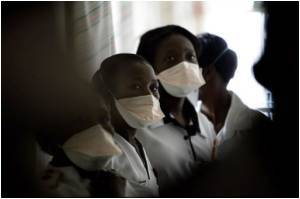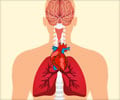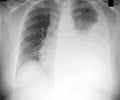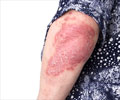A new study from Boston University has managed to put forth a map of the cellular circuitry of myobacterium tuberculosis, the bacteria that causes tuberculosis

In the United States alone, there were approximately 10,500 new cases of tuberculosis reported in 2011, according to the Centers for Disease Control, and recent TB outbreaks have been reported in Virginia, Los Angeles and South Carolina. "We have generated the first large-scale experimental map of thousands of molecular interactions in the bacterium that enable it to cause disease," said lead author James Galagan, PhD, associate director of Systems Biology at the NEIDL and associate professor of biomedical engineering, bioinformatics and microbiology at BU.
"Based on this map, we have developed the first computer models that will ultimately enable us to more easily study this challenging infectious organism and develop new drugs, therapeutics and diagnostics." Galagan and his co-investigators expanded their ongoing research of the infectious disease to the NEIDL in April 2012, after the lab had been approved for Biosafety Level 2 (BSL-2) research.
"As with any map of a previously unexplored territory, we have made a number of surprising discoveries," Galagan said. The researchers looked at the interactions of 50 transcription factors, which are proteins in cells that decide how the cell responds to its environment. The researchers also mapped the molecular response of the bacterium to low oxygen, a condition that reflects the host environment within which the bacterium must survive.br>
"We pinpointed many molecules, interactions and responses that appear important for the bacterium but that had been previously overlooked. These provide new avenues for combating this disease," he said. One important process studies is the ability of the bacterium to break down cholesterol. "The bacterium is thought to eat cholesterol during infection. But it does not make its own cholesterol. It eats cholesterol derived from human cell," added Galagan.
The researcher's results generate new insight into this process by uncovering the interactions that potentially link cholesterol break down to changes in the host cell environment. The work reported utilized technologies and approached developed for the Human Genome Project. "We co-opted these approaches to study this organism that is much smaller than us, but is still quite complicated," explained Galagan, who also worked on the human genome.
In the next step, the researchers will apply these technologies to M. tuberculosis while it is residing in a macrophage, one of the body's immune cells that the bacterium tends to inhabit, in order to enhance knowledge on how it is able to survive in the body for an extended amount of time. Boston University officials announced in April 2012 that researchers would be moving into the NEIDL and would begin TB research that had been approved for the BSL-2 laboratories.
Advertisement













